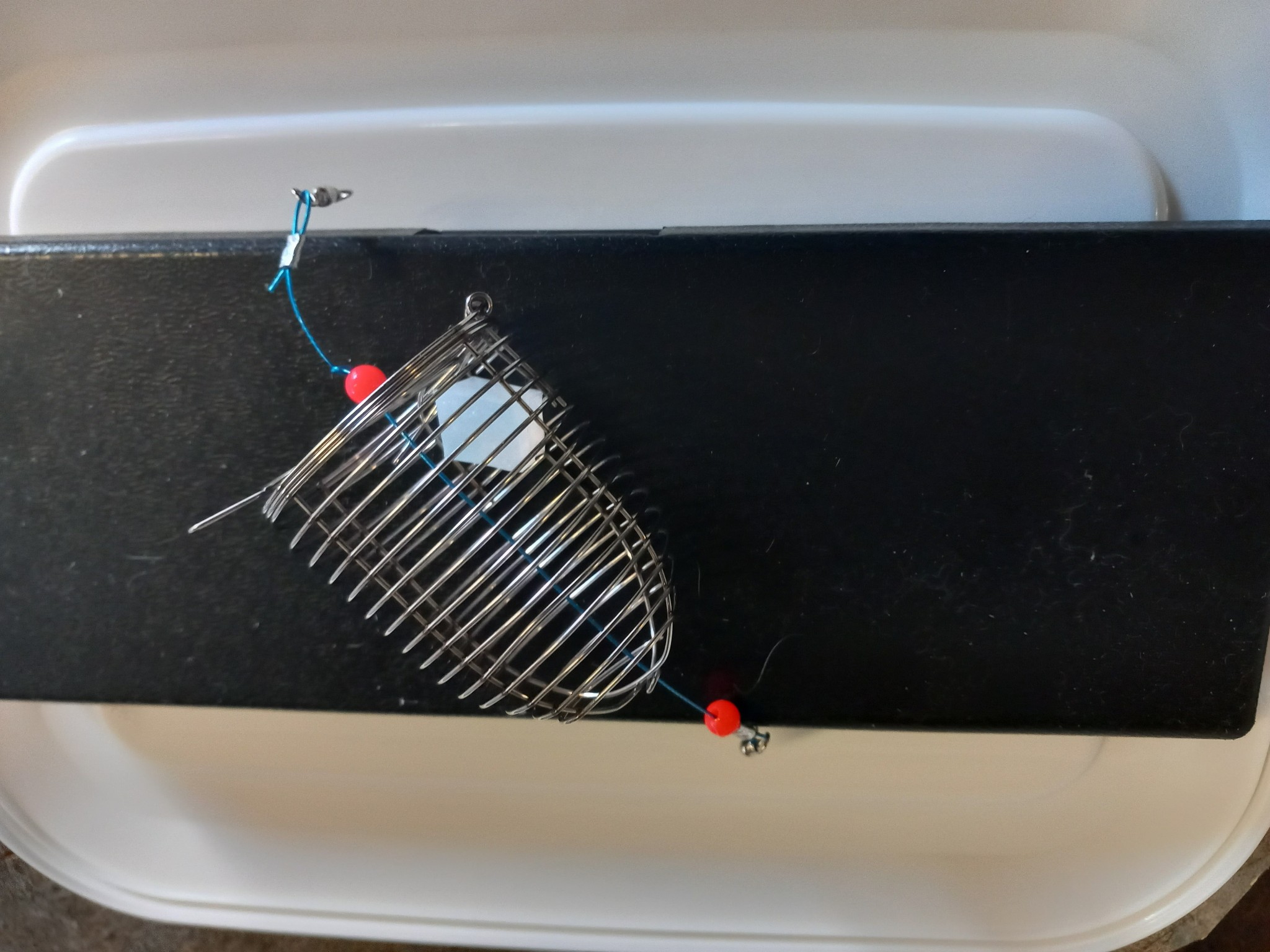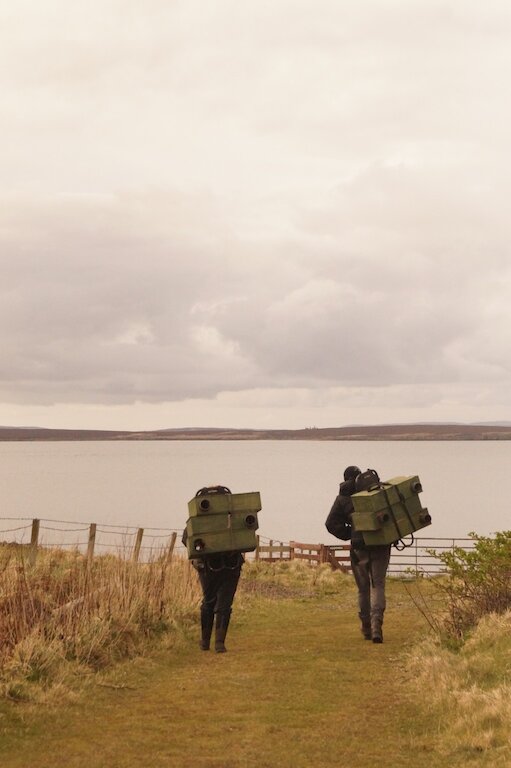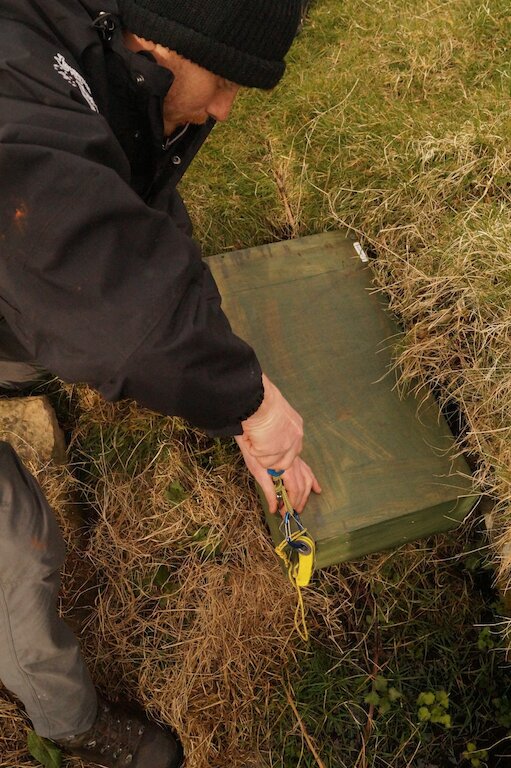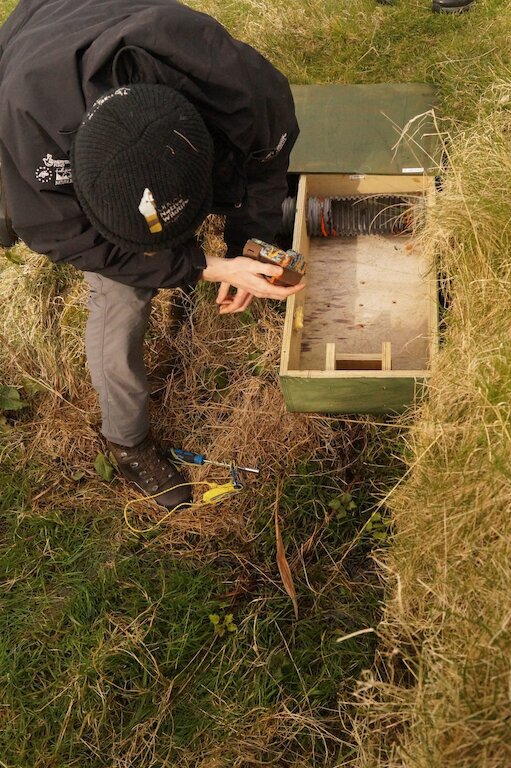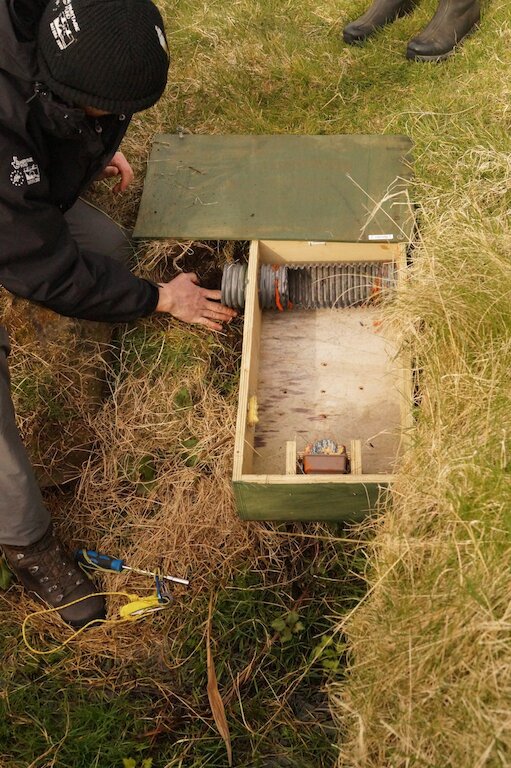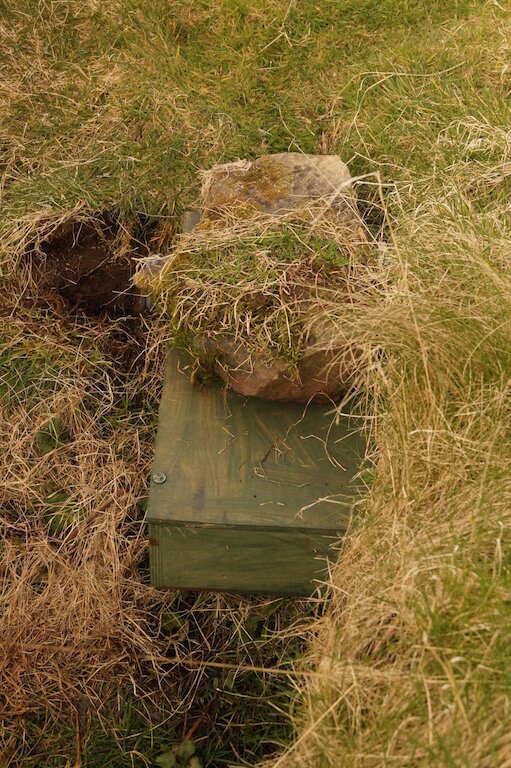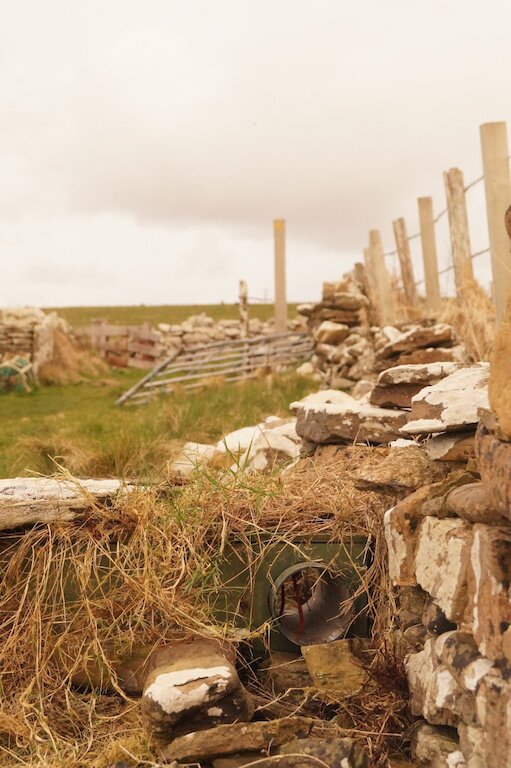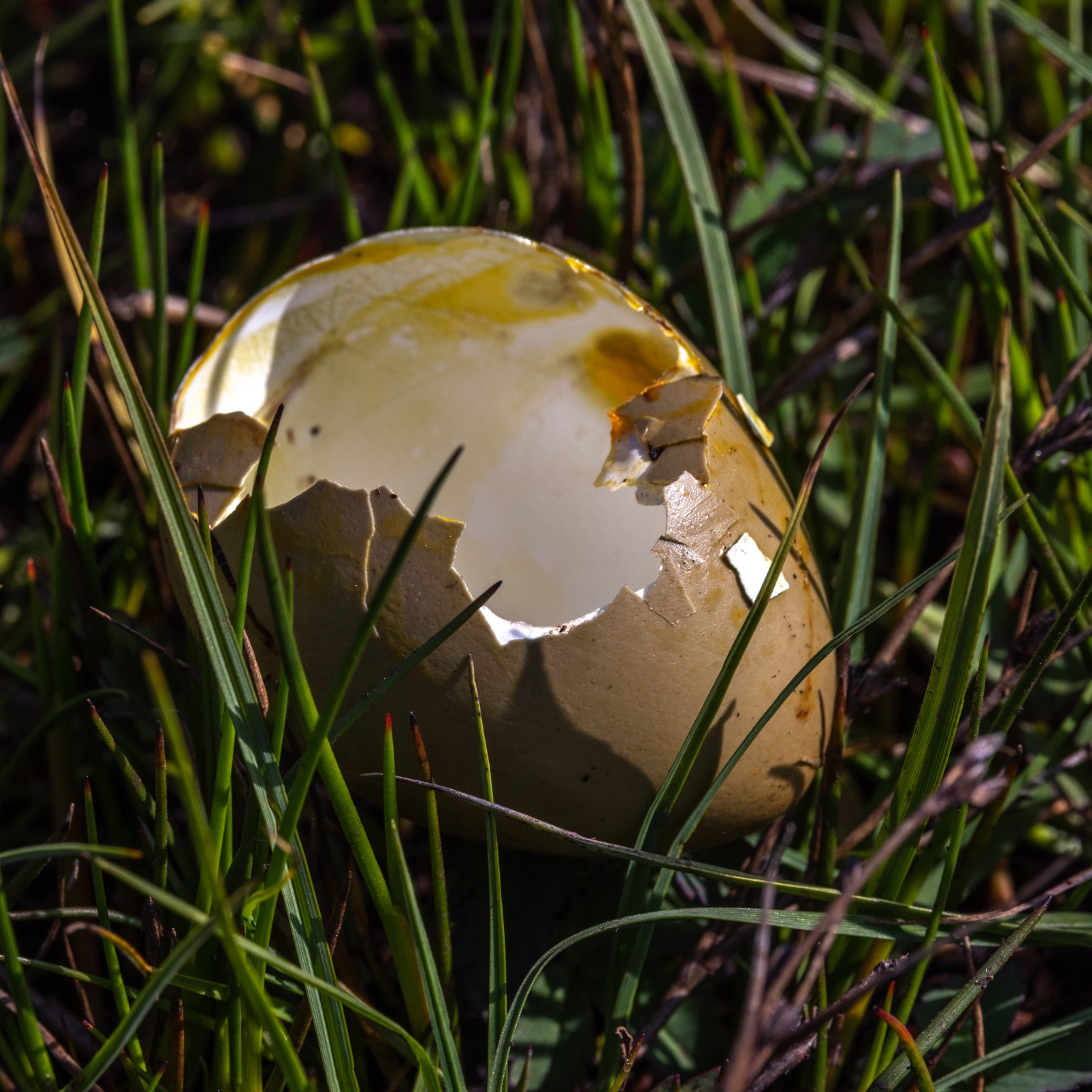Stoats with Covid-19? Not quite, but a large-scale screening of different types of coronaviruses in British wildlife has identified a new ‘minacovirus’ in the Orkney stoat population. This type of coronavirus, which is closely related to ones found in mink and ferret, was identified in 57% of stoat rectal samples provided by the ONWP. The research was led by Nottingham University, and can be read in full here.

As the largest stoat eradication project in the world, the Orkney Native Wildlife Project is an incredibly useful resource for research into the biology and behaviour of stoats. Having dissected over 5,000 of the invasive predators, this massive sample size, coupled with the project’s monitoring programme, means the ONWP has been involved in some pretty pioneering research, both from within and without the project. In this blog, we take a look at some of the stoat-science which is being produced.

Stoat Coronavirus
A group of stoats filmed on a nest monitoring camera in Orkney, earlier this year.
According to Professor Rachael Tarlinton, ‘We don’t know if it is communicable between different species. That will take a lot more work to figure out’. The project remains in contact with the researchers, who may continue to look into this in the future. Increasing our understanding of coronaviruses is key to preventing and preparing for future outbreaks. This is therefore incredibly important research, to which the project has made a major contribution.

Fatal Attraction
In the ONWP workshop, stoat anal gland lure has become a regrettably familiar smell. However, the project has now begun trialling a synthetic-based ferret odour lure, produced by Manaaki Whenua. Barely detectable to the human nose, it has been used to great effect on a range of invasive predators in New Zealand. Because it is set in a synthetic jelly, the lure should last longer than conventional bait.
It’s use in Orkney will be the first time that it has been trailed in the Western Hemesphere. Denis Stojanovic, ONWP Operations Manager, says that the lure is, ‘particularly interesting because it seems to be attractive to that subset of stoats which aren’t attracted to our base lures’, such as rabbit and egg. Female stoats tend to be more hesitant than males when investigating conventional bait. However, the Manaaki Whenua lure does not seem to suffer from the same disparity between the sexes.
Increasing the number of caught females obviously increases the overall number of stoats being caught. Moreover, pregnant females are particularly important targets during the breeding season, and because they have the potential to colonise new islands. We will keep you updated on the lure’s progress as it is rolled out across the trap network.

Stoats on Film
To catch a stoat, you need to understand its behaviour. Most stoats are what is known as ‘generalists’, and will investigate an egg, rabbit, fish and even mayonnaise, when used as bait. However, as the previous section mentioned, not all stoats behave the same. Diet preferences likely develop in part based on what is available, but also due to learned traits picked up when a kit. As such, certain stoat families may be reluctant to take certain baits.
To better understand how stoats behave in and around trap boxes, Adam Pickles, a Trapper Team Lead with the ONWP, has constructed and deployed ‘Mostela camera stations’ around Orkney. These stations are made by placing a trail camera inside a box, with one or two circular entrances. This is their first recorded use by a stoat eradication project.
On reviewing the initial footage, Adam has discovered that stoats will, tentatively, investigate an un-baited box out of sheer curiosity, along with a host of other animals. Mice, Orkney voles, and even a tiny pigmy shrew have all made guest appearances in the boxes! This information helps the project to understand which prey items are in certain areas, and what might be on the menu for local stoats.
A major advantage to the Mostela stations, when compared to trail cameras placed in the field, is that you cut down the amount of interference. As trail cameras are motion activated, they can be set off by grass in the wind, cars on a distant road, dogs, and dog walkers.
A pigmy shrew filmed inside a Mostela station this year.
By putting the camera inside a box, you massively reduce the number of clips which someone has to trawl through at a later date, and preserve the camera’s battery life. This makes the Mostela stations ideal for biosecurity (preventing the spread of stoats to currently stoat-free areas), as they can be left on hard-to-visit islands and checked fairly infrequently.

Decoy Eggs
Finally, the project has also featured in several academic studies. Among these, Leah Gray has been looking at nest predation in Orkney as part of her PhD. By working with the ONWP’s monitoring team and deploying fake nests with fake eggs to assess predation rates, Leah is looking at the impact of predation on ground-nesting birds. This research has not only proved valuable for her, but for the project, too. That’s because one of Leah’s PhD supervisors analyses all of the ONWP’s monitoring data. As such, Leah is keen that research helps the project to safeguard Orkney’s native wildlife.
Hopefully this blog has demonstrated that invasive predator eradication initiatives are about more than just eliminating non-native animals. While most of the research coming out of the ONWP can inform the project’s eradication methodology, it is also useful for a wider audience. Data and techniques which have been gathered removing stoats from a place where they are invasive, may be used in the future to conserve stoats or other mustelids in the places where they are native. As the world’s biggest invasive predator eradication on an inhabited island, it is important that the ONWP shares its progress and discoveries with the wider scientific community.

